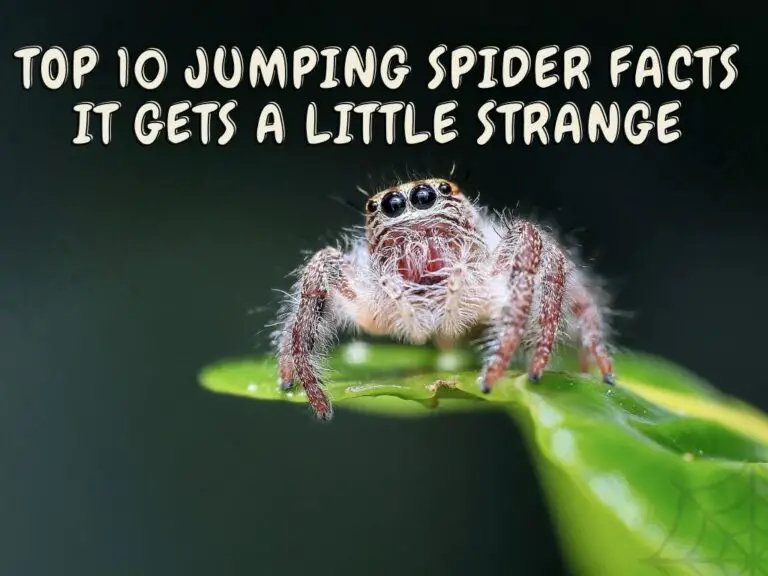Jumping spiders got their name from their jumping ability. This how they find food, but it’s exciting to see them hop from one spot to another. With more than 6,200 species in the world, you have a wide choice when looking for a jumping spider to keep as a pet. Three hundred of these species are mostly found in Canada and the US.
Jumping spiders are amazing arthropods and are believed to have the best vision that they use in hunting, navigation, and courtship. Those that cannot jump move slowly, but most of them have the agile jam that comes in handy during hunting. These spiders can also jump when they feel threatened or to cross a long gap.
Some species are popular than others, but one thing they have in common is called salticids because they can entertain and alarm you with their pre-capturing tactics and how they quickly adjust their hunting skills depending on the prey response. Despite having a small brain, the size of a poppy seed or less these pets are intelligent and quite interactive.
The jumping spiders are easy to care of. All you need is to feed and give them water once in a few days.
Little Know Jumping Spider Facts
Big Family
Jumping spiders belong to the Salticidae big family. A reunion is impossible for these spiders because they are estimated to be more than 6,000 species, and each has thousands of members. They are the biggest family among all types of spiders in the world.
Found in different parts of the world
Jumping spiders are found in almost every part of the world except the extreme polar areas. These animals can survive in various habitats, and the reason they make a great pet.
The only people with problems keeping jumping spiders are those living around Antarctica or Artic. These spiders thrive in tropical climates though they still do well in chilly regions.
No Super Legs
The jumping spiders do not have super legs. Their name makes the spiders sound like they have super muscular legs that allow them to jump. But this far from the truth, their segmented legs combined with smooth blood flow are the secret behind their crazy hops.
When jumping, the spiders’ hemolymph or blood pressure changes because the upper body muscles contract, forcing blood into the legs. This extends their legs and propels them towards their aimed direction.
They are not reckless
The high jumps of jumping spiders may look reckless. But they are not; these spiders use a dragline along a silk line that they spin fast. It is the silk line that ensures they land smoothly and stabilize once they touch the aimed spot. It is their safety net, and they can even stop in the middle of a jump or send direction without getting hurt.
Hunt without webs
The ability to jump easily and get hold of their prey is excellent. This is why jumping spiders do not need to use webs when hunting. They eat small insects and use venom to capture and kill them.
Some of these spiders, such as the Bagheera kipilingi consume plant matter, and Evarcha culicivora survive by eating nectar. They make perfect pets because their venom cannot harm humans, and it is hard for them to bite.
They are trainable
According to the University of Manchester, jumping spiders can be trained to jump when commanded. This is one reason they make excellent pets as you can improve their jumping skills though it’s not easy.
Exceptional eyesight
The jumping spiders’ eyes are arranged oddly; they have two small eyes combined with two big ones, which gives a set of four eyes. This gives them exceptionally strong eyesight.
They have a rectangular head that hosts the eyes; the smaller eyes give the spiders a wider view and quickly sense motion. The larger one gives it a detailed view regarding color and the exact size of their targeted animal. Also, their retina can swivel independently, and the spiders can see around while standing still as they do not have to move the head.
There Hearing ability is excellent
Jumping spiders do not have ears or even eardrums, but their hearing ability is amazing. This is made possible by sensory hairs and their bodies that sense sound waves’ vibrations and send a signal to the brain. Researchers discovered this in 2016, and it has been proven that these insects can feel sound waves.
The Females Are Wood Through Singing And Dancing By Males
The jumping spiders use their senses in hunting and staying safe. But the same senses come in handy during mating. These spiders are unique; the males seduce the females through singing and dancing.
They writhe and wriggle in some special ways. Each one of them has its special way of “singing”, which sends some clicks, buzzes, taps, and scrapes that can attract a female spider near them. The singing and dancing sends vibrations on the ground and gets into a female spider through its legs and sensed by her hairs. It may impress the female spider, but sometimes if it doesn’t she can even kill the male spiders.
The Peacock specie standout
While jumping spiders have a unique way of mating, the peacock spider is quite special. This species is found in Australia and attracts the attention of females through waving.
They do this using their third pair of legs when he sees a good candidate. He combines it with a colorful flashing of their fan that looks like the peacocks. It is not an easy process and may take more than an hour, depending on the targeted female’s interest.
Conclusion
Jumping spiders make up 13% of different spider species in the world. These animals are curious, and their jumping is majestic. Spending time with them is exciting, and as a pet, you can place your spider on the palm and watch it jump. They are cool; just be sure to get the best specie depending on your location.




